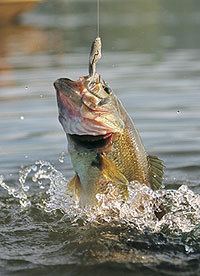Primary outflows Crab Orchard Creek Surface area 6,965 acres (2,819 ha) Mean depth 2.77 m | Primary inflows Area 28.19 km² | |
 | ||
Location | ||
Brushpile crappie of crab orchard lake illinois
Crab Orchard Lake is a 6,965-acre (28.2 km²) reservoir in Williamson County, Illinois. It is the centerpiece of the Crab Orchard National Wildlife Refuge. It is fed by Devils Kitchen Lake and Little Grassy Lake, which are also within the National Wildlife Refuge.
Contents
- Brushpile crappie of crab orchard lake illinois
- Map of Crab Orchard Lake Illinois USA
- ControversyEdit
- References
Map of Crab Orchard Lake, Illinois, USA
Crab Orchard Lake was created when Crab Orchard Creek, a tributary of the Big Muddy River in southern Illinois, was dammed in the 1930s for purposes of recreation and flood control. The Crab Orchard National Wildlife Refuge was established August 5, 1947 following the transfer of all land previously held by the Crab Orchard Creek Project and the Illinois Ordnance Plant to the United States Fish and Wildlife Service.
The lake offers opportunities for boating, camping, fishing, and swimming. Two campgrounds, Blue Heron and Crab Orchard, operate on the northern side of the lake. The Illinois Department of Natural Resources (IDNR) has stocked the lake with largemouth bass, and starting in 2006 has also installed artificial spawning beds in the lake's Grassy Bay (the lakebed's eroded clay and soft muck surfaces are not suited to bass spawning). As of 2008, the record largemouth caught in the lake weighed 10.6 pounds.
Many users of the lake live in the large nearby communities of Carbondale and Marion.
ControversyEdit
Crab Orchard Lake is located in an area of Illinois known for high-sulphur coal and former coal-fired heavy industry, including the smelting and refining of heavy metals. During World War II, munitions such as TNT were produced at the Illinois Ordnance Plant north of the lake. A postwar factory, Sangamo-Weston, used PCBs extensively. Chemists have found that much of the lake and the watershed that drains into it is contaminated with lead and other toxic substances.
Under a mandate from the U.S. Congress, the Crab Orchard National Wildlife Refuge is charged with the dual duties of maintaining recreational facilities and leasing lakeside land to factories.
